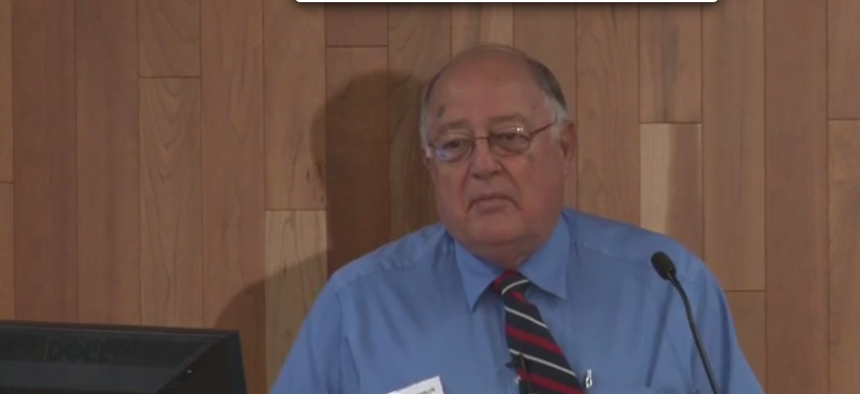Preparing for the Next Big Flash Flood in Western North Carolina

Jerry VeHaun, director of emergency services for Buncombe County, North Carolina UNC Asheville / YouTube

Connecting state and local government leaders
Watch Jerry VeHaun, director of Buncombe County Emergency Services, discuss what he’s learned from 42 years dealing with floods.
Jerry VeHaun, the director of North Carolina’s Buncombe County Emergency Services, has experienced plenty of floods over the years and knows that flash floods are a particularly dangerous hazard in this mountainous area of the state.
“My first one was back in 1973—yes, I’ve been around a long time, I’ve been with the county for 42 years and I’ve seen a lot and I’ve seen a lot of floods,” he said at an emergency management conference hosted by the University of North Carolina at Asheville last month.
That event examined research, best practices and lessons learned from severe flooding from two hurricanes that dropped significant rainfall on western North Carolina 10 years ago. UNC Asheville recently posted video of VeHaun’s observations to YouTube.
One of the most important practices in emergency management isn’t necessarily responding to the immediate emergency situation at hand—it’s learning from past events to be better prepared for the next one.
“We do studies. We look at what went right, we look at what went wrong from past flood situations,” VeHaun said. “We look at what could we have done different.”
New technology, improved weather forecasting and communications has made a tremendous difference in emergency response, he said.
In the case of the Enka-Candler Fire & Rescue Department, where one flood-prone local creek presents a known hazard, “they know where the creek is going to come out first,” VeHaun said. “They know which businesses or which residences they’re going to maybe evacuate. They know where to respond early on, where the problems are just as other fire departments do in Buncombe County.
Coordination between local departments and county emergency management is critically important, he said. “All of this is geared up to the data that you’re going to look at today and how quickly you can get us that information so know how to respond and we know where to respond. And trust me, it’s improved many many times since 1973 when I experienced my first flood."
Watch VeHaun’s remarks:





